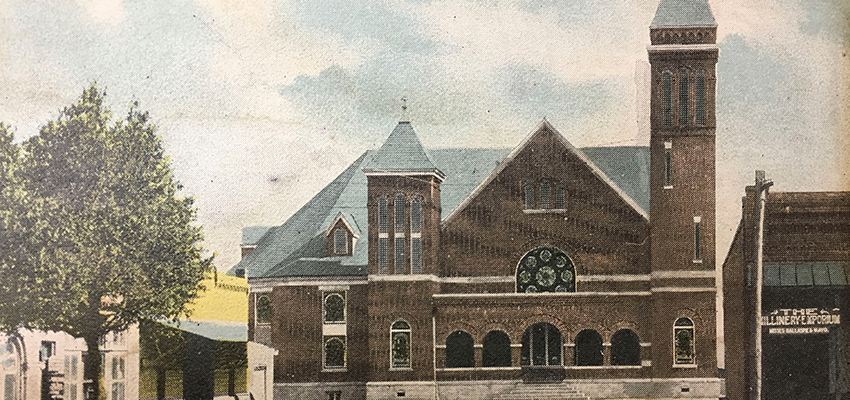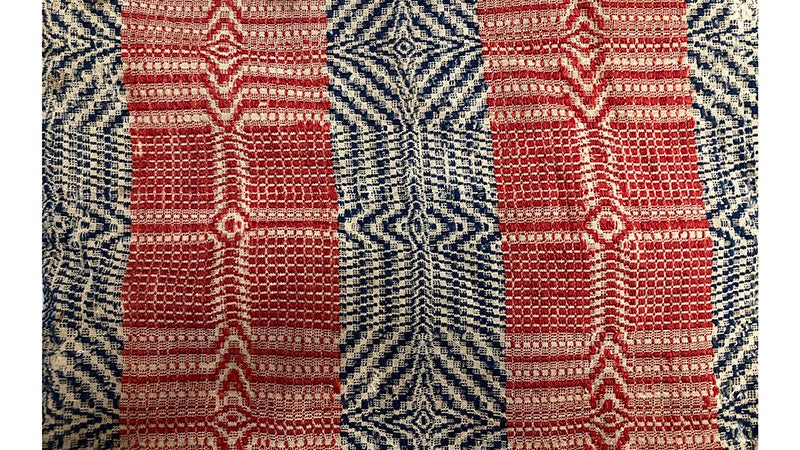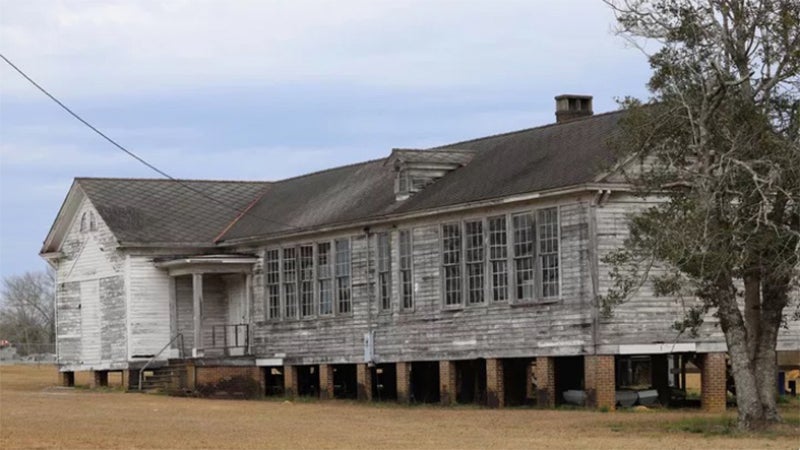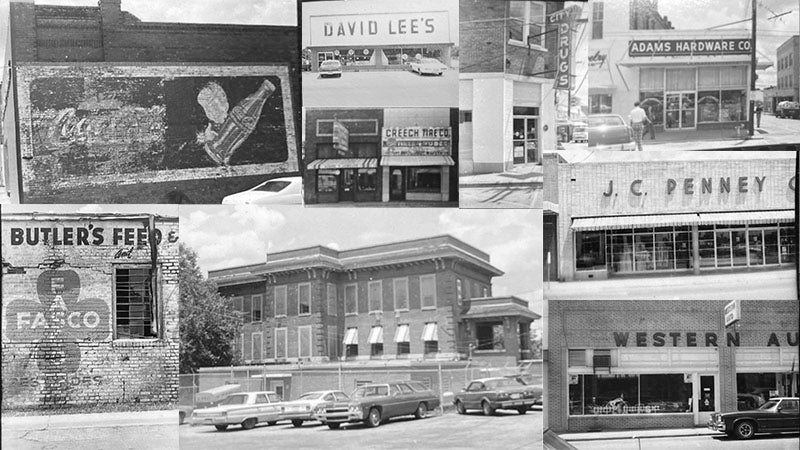Remember When: Call back yesterday
Published 2:53 am Saturday, December 2, 2017

- A corner of the building (right) on the lots where the new courthouse would be constructed. The 1905 First Baptist Church now the courthouse parking lot is also shown in this old postcard picture.
Yes, “Call back yesterday” as Shakespeare once said! A hundred years ago sounds like a long time ago, but in 1915 when this column begins, the little town of Andalusia had grown a lot in 15 years from when new transportation had entered the picture in the 1899-1900 period. The rails opened up trade in the form of the railroad extension from Searight into downtown Andalusia bringing the trains to town which shipped in mules for hauling and building materials to construct new homes and other structures. The trains also shipped out farmers’ products including the lucrative turpentine and pine products as well as cotton. Salesmen could come to town, stay at the local hotels, sell to the merchants, and after conducting business jump on a passenger train for the next stop along the track.
The microfilmed newspapers housed at the Andalusia Public Library are a wealth of information reporting about the industrious citizens, business persons, civic clubs, churches, and leaders working to establish this little village into a town that has remarkably become a city all these years later. To recall and recognize their untiring efforts is to be thankful and grateful to those long gone who came before. So this is an attempt to REMEMBER WHEN and triumph in the progress made thus far.
In September 1914, the County Commission and other leaders were debating on where the new courthouse should be built. The Board of Revenue kept detailed minutes of their meetings. Lots on the north side of the Public Square were considered and finally purchased from Anna Riley ($11,000.) and Dr. L. E. Broughton ($5,500.).
“The years leading up to construction were fraught with disputes and uncertainty,” a young law student intern for Judge Ben Bowden wrote in his research notes last summer (2017). A controversy regarding the price of the contract which could lead to faulty construction and an uncertain level of workmanship was finally settled by the Andalusia law firm of Powell and Albritton, however, this provided a difficult start for construction. The Board chose a new contractor, Little-Cleckler Construction of Anniston, Alabama with the renowned Frank Lockwood of Montgomery to serve as the leading architect.
January 8, 1915 – “The San Gala Hotel sign has been torn down, preparatory to the erection of a new one that will read Hotel Ray.” (The Hotel Ray on Pear Street near the Thagard Drug Co. was a 3-story hotel with balconies next to the old city jail better known as the “Calla-boos.” It was later remodeled and became the Victoria Hotel operated by J. J. Moates after the Dixie Hotel was destroyed by fire.)
April 13, 1915 – “O. L. Thagard of Andalusia has purchased a motor car. It’s a Ford!”
June 8, 1915 – “The old Covington County Jail and the two adjoining brick buildings have been torn down to make way for the new courthouse.”
June 18, 1915 – “The New Pickford Theatre, Andalusia’s newest and prettiest little movie theatre was opened this afternoon.”
August 20, 1915 – “There is displayed in the show window of J. L. Knox & Co. a splendid architect drawing of the new Covington County courthouse which is being erected in Andalusia. The drawing shows the new building up in magnificent style, and it is admired by all who have seen it. The design is along entirely different lines from those usually employed in erecting courthouses, it having the appearance of a great library building. Lockwood & Poundstone of Montgomery are the architects.”
October 22, 1915 – “Three Andalusia doctors saved the life of a little boy Wednesday evening by transferring blood from the veins of the little fellow’s sister. The right foot of J. W. Davis, Jr. was completely severed by a train running over it.”
Ailments and accidents that caused deaths listed in the old newspapers of 1914-1917 included influenza, scarlet fever, dropsy, La grippe, Bright’s disease, appendicitis, typhoid fever, heart failure, pneumonia, consumption, tuberculosis, struck by lightning, a duel affray, scalding from explosion at the Horse Shoe Lumber Co., thrown from a carriage, and struck by lightning. A common phrase that accompanied these obituaries was “Death relieved their suffering.”
January 5, 1916 – “J. B. Youngblood has opened an automobile garage next to the Chero Cola plant.”
April 18, 1916 – “Andalusia will be shown in movie play houses all over the United States. A motion picture machine was brought to Andalusia and made pictures of the courthouse square and the people assembled thereon, of the residence sections including East and South Three Notch and River Falls and Church Streets, also the Packing House.”
I wonder if our fair town will ever be featured on TCM (Turner Classic Movies)!
May 2, 1916 – “The Lime Cola building on South Cotton Street is being readied for Andalusia’s new Lime Cola plant.”
May 9, 1916 – “Work on Covington County’s new courthouse has been interrupted and work on the roads has been suspended pending an application for the Supreme Court.”
June 23, 1916 – “A young Henley man was a victim of the white plague (TB). His mother died about 3 months ago with the same dreaded disease”
June 27, 1916 – “Off to War – Orders came for the boys to leave for Montgomery (WWI).
July 23, 1916 – “The Andalusia Bank & Trust Co. and the Bank of Andalusia consolidated.”
Businesses advertising in The Andalusia Star were Andalusia Ice Works, Benson Hardware Co., Southern Cotton Oil Co., A. Whaley, Attorney-at-Law, Dr. E. Smith, Dentist, and R. L. Kearley, Veterinary Surgeon.
October 17, 1916 – “Editor Ed Doty retires.” (Doty and his family lived in the house where Dr. Reid Kerr’s medical office is situated.)
October 20, 1916 – “Oscar Rawls was killed by a rolling log.”
November 21, 1916 – “Dixie Hotel Leased – J. J. Moates of Miami, Florida will resume the management of this establishment on January 1, 1917.”
November 18, 1916 – “Fire consumes a part of (downtown) Red Level early Saturday morning. Red Level was swept by the most disastrous fire in its history. The origin is not known.”
December 8, 1916 – “On Christmas night there will be a beautifully lighted and tastefully decorated community Christmas tree on the Public Square in Andalusia. On this tree there will be gifts for every child in Andalusia.” (This must be the forerunner of today’s Christmas Angels project.”
January 16, 1917 – “In Judge Salter’s court, persons charged with abusive language, violating road law, larceny of a hog, vagrancy, violating game law, and shooting a mule in court cases were either settled or waived.”
March 27, 1917 – “Andalusia sustained a $30,000. loss Saturday morning when the big 3-story Masonic building was burned.”
June 22, 1917 – “On Wednesday afternoon a Red Cross chapter in Andalusia was organized. Mrs. J. E. McCann is president.”
June 27, 1917 – “The Andalusia Packing Plant was sold to Swift and Company (of Chicago).”
A side note here – The executives sent here from Chicago to manage the Swift and Co. industry built a half dozen or so Sears-Roebuck houses in Andalusia that still exist in local neighborhoods. The house plans were selected from their catalog, and the building materials including everything down to the wallpaper and nuts and bolts were shipped to Andalusia by train from Chicago. These homes were well-built at the time in towns all across America where the packages could be shipped by rail to the sites. Some “copy-cat” homes sprung up around the fashionable and stylish Sears homes of the time, and Andalusia has some of those, too!
July 7, 1917 – “A. D. Caton, 78, died at his home at River Falls. He was an ex-Confederate soldier. Interment will be at the Long Branch Cemetery (in Cohassett).”
August 7, 1917 – “Double Wedding – “Mr. S. A. Smith and Miss Fannie Barron; Mr. Joe Snowden and Miss Mary Kierce were wed.” (Miss Fannie Barron was the school teacher at the one-room Fletcher School on the Brewton Highway. I suppose she had to retire her post since “school marms” could not be wed and still teach school, a requirement of the day!”
August 10, 1917 – “Four children were bitten by a mad dog. They were taken to Montgomery where three of the children are undergoing the Pasteur treatment.”
September 18, 1917 – “Enrollment at the Andalusia City Schools was 510 Monday morning. That was the largest in the history of the school.”
September 28, 1917 – “Sheriff J. W. Livings and the Covington County boys were called out on the 21st to enter the National Army. Persons desiring a photograph of these boys can get one by calling G. W. Cummings Studio.”
May 14, 1918 – “Old Courthouse Will Be Removed – At the request of a local committee headed by Col. G. O. Waits, the county Board of Revenue sold to local purchasers the old courthouse building which will be removed, and the site will be converted into a little park under the supervision of the Civics Club. This action will meet the approval of the people generally as this old building in the center of the square detracts much from the appearance of the city.”
From the old Board of Revenue minutes, “Masons were instructed to remove the fourth (1897) courthouse’s cornerstone and install a new cornerstone in the current (1917) courthouse.” (HELP SOLVE THIS MYSTERY – Where are those cornerstones now?)
The 2017 summer intern also wrote in his research notes, “Ironically, the current courthouse also experienced a small fire during construction (as did courthouses #1, 2, & 3) on March 24, 1917. Fortunately, the structure did not give way to the flames, and construction wrapped up within 4 months in July 1917.”
The 1917 Covington County Courthouse sits upon a granite foundation. Its walls contain granite, sandstone, brick, and marble. The rear side of the courthouse used to contain a courtyard prior to an addition. The front façade remains the same. In spite of some other changes, the building which reveals a high level of craftsmanship has retained its traditional elegance, renowned for its Beaux Arts and Italianate architecture with Corinthian columns and pilasters, styles widely popular for state and federal government buildings.
One of our readers, Mr. Morgan Simmons, states that his grandfather, W. F. Simmons, was Chairman of the Board of Commissioners when the courthouse was built in 1917. He was also Chairman of the Andalusia School Board when East Three Notch School was built in 1914.
The 100th anniversary of the building of the magnificent and historic courthouse will be observed on Tuesday, December 19, 2017 hosted by the Covington County Commission, Judge Ben Bowden, Judge Stacy Brooks, Judge Lex Short, Circuit Clerk Amy Jones, and Revenue Commissioner Chuck Patterson. Mark your calendar to attend this event where we can celebrate a part of our proud heritage and Remember When. Visit the Three Notch Museum on Historic Central Street soon to view a display of interesting artifacts from the courthouse.
Sue Bass Wilson (AHS Class of ’65) is a local real estate broker and long-time member of the Covington Historical Society. She can be reached at suebwilson@andycable.com.





